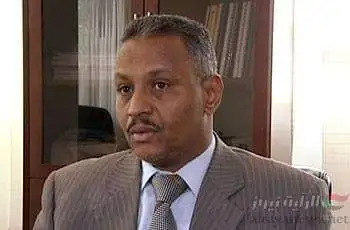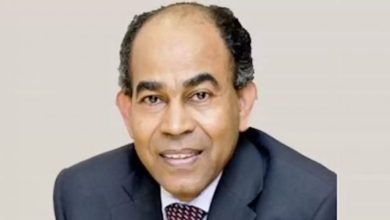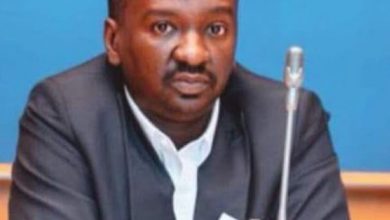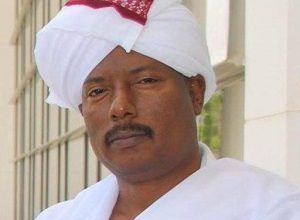The Suspicious External Role in Fuelling Conflicts in Sudan

Al-Obeid Ahmed Marawih
The war that has been raging in Sudan since mid-April 2023 is not isolated from the long historical context that this African-Arab country has experienced since before its colonization in 1889, and then its independence after World War II, but this war differs greatly from all the civil wars that Sudan has known and whose people have paid the price for in its stability and future outcomes, and this is not only because it is the only long war that the country’s capital has witnessed, and inflicted on it the destruction it inflicted, but also because it is linked to the intensity of foreign interventions and overlapping agendas.
In this article, we will try to provide an explanation for this context that we are talking about, which is a context in which internal and external agendas overlap and its threads intertwine.
The conflict and rivalry between Christianity and Islam remained present in Sudan, in one way or another, in all foreign interventions and the incitement of conflicts in this country with its distinguished geographical location, rich in its resources, and multicultural, ethnic and religious diversity.
The flame of Islamic fervor remained burning in it; therefore, it was not surprising that Sudan witnessed “Mahdi Revolution” with its Islamic identity and jihadist style (1881-1889); it overthrew the Turkish-Egyptian rule that had overthrown the Blue Sultanate or the Islamic Kingdom of Sennar, and the Mahdist revolutionaries killed the British General Gordon Basha, the Governor-General of Sudan at the time.
The Islamic identity and the Arabic language could have expanded in Africa through Sudan, which was the most qualified country for this, but the British colonialism that came in the wake of the Crusades realized this early, and after it overthrew the Mahdist state after its invasion in 1889 following cooperation with the Khedive’s rule in Egypt, it proceeded to issue what was known as the “Closed Areas Law” which defined areas in Sudan that foreigners and Sudanese are forbidden to enter or reside in without an official permit.
The law included 7 scattered areas of Sudan in Darfur, Kordofan and South Sudan.
Among the manifestations of this law is the deprivation of the northern Sudanese from establishing schools in the south if he is allowed to reside there, and if he marries a southern woman, he cannot take his children upon his return to northern Sudan. In 1922 the Closed Areas Law was limited to southern Sudan, and in 1930 rulings were issued with the aim of preventing northern traders from settling in the south, and stopping the spread of Arab culture and the Islamic religion in southern Sudan.
In fact, wearing traditional Arab clothing such as the galabiya and turban was prohibited for southerners!
However, this policy was suddenly abandoned after World War II, specifically in 1946, and because it lasted for more than 30 years, it created a deep rift in the fabric of Sudanese society, which later led to the civil war between the north and the south in 3 rounds of wars; the first began in August 1955, before independence, with a rebellion that was suppressed at the time, the second in 1963, which lasted 9 years, and the third in 1983, which lasted 20 years and ended with a “comprehensive peace” agreement that led to a referendum on self-determination for the southerners, after which they chose to have their own independent state. The vicious Cycle :
Throughout the life of the national rule in Sudan, which has lasted for about 70 years so far, the country has not witnessed a stable rule, and its elected parliaments have not passed a permanent constitution. The fluctuation between a pluralistic democratic system and a totalitarian regime with a military character that is overthrown by a popular revolution followed by a short transition period, then a coup again, constitutes what is commonly called the “vile cycle.”
After its independence, Sudan witnessed the establishment of elected parliaments 3 times that brought pluralistic governments, each of which was overthrown by a military coup (1958, 1969, 1989), then 3 popular revolutions (1964, 1985, 2019) overthrew the regimes that were described as totalitarian, followed by a short transition period, and so on.
But what is striking in all this political turmoil is that the issue of national identity and its relationship to Arab culture and the Islamic religion remained present, and Western economic and political pressures in general and American in particular continued to be imposed on Sudan, even during the era of democratic rule that followed the fall of President Nimeiri’s regime, when demands for the abolition of Islamic Shari’a laws intensified.
The flow of weapons to the southern rebels led by John Garang did not stop until the democratic rule was overthrown (1986-1989), when President Omar al-Bashir seized power in a military coup that was later proven to have been supported by the National Islamic Front ( NIF) , with the aim of preventing the country from falling into the hands of the rebels who began to advance north, supported by foreign powers that did not want an Islamic or even independent government in Sudan.
When the Islamic identity of President Al-Bashir’s rule (1989-2019) was revealed, whose arrival to power coincided with the collapse of the Eastern Bloc and the disintegration of the Soviet Union, and the United States US monopoly on world leadership, along with its Western allies, intense pressures quickly began on the new regime in Sudan to change its orientations or be besieged and overthrown.
US exploited the serious mistakes made by the regime, imposing an economic blockade on it that lasted 27 years, and a diplomatic blockade that helped isolate it from its near and far neighbors, and contributed to the embrace of its northern opponents by its neighbors, in addition to expanding its support for the armed rebellion whose areas of control exceeded the borders of the southern directorates to the areas of Nuba Mountains, Blue Nile, and eastern Sudan, which are considered to be part of the north.
Even before the approach of reaching the Comprehensive Peace Agreement in 2005 under American, British, and Norwegian sponsorship, Western pressure groups succeeded in igniting strife in Darfur between what they called tribes of African origin, and those called of Arab origin from the Rizeigat Arabs to whom Mohamed Hamdan Daglo (Hemedti), the commander of the “Rapid Support Forces RSF ,” belongs. UNITAMS Mission
The joint United Nations-African Union mission in Darfur (UNAMID) was about to end its mission in Darfur when the “Salvation” regime was overthrown in April 2019. Based on estimates regarding the vision of the new authority in Sudan, with its military and civilian wings, Prime Minister Abdullah Hamdok sent a letter to the Secretary-General of the United Nations asking him to send a UN mission under “Chapter Six” to “support the transitional period in Sudan.”
The UN Security Council approved the request, and in two successive resolutions, the mandate of the UNAMID mission was terminated and German Volker Perthes was assigned to head a limited mission, “UNITAMS,” but with broad powers, to contribute to supporting the democratic transition in Sudan.
The way Perthes managed his mission reinforced the internal division in Sudan, as he sought to isolate everyone who participated with the National Congress Party (NCP)in power during the past three decades, in addition to the party itself. The internal division was reinforced by the new civilian authority in Khartoum’s attempts to re-engineer Sudanese society; Politically, economically and socially, it abolished a number of Islamic laws and legislation, allowed usury in banks, and began changing school curricula under the pretext of reducing Islamic religious burdens; which increased tension and internal political division.
But more dangerous than this is the plan supervised by the United Nations Mission to Support the Transitional Period, which was widely interpreted as aiming to dismantle and restructure the Sudanese army, under the pretext that it is the “army of the Islamic regime” that was overthrown, based on what Paul Bremer did in Iraq, although the method and style differed, and it was understood that the United States of America USA and some of its allies in the region were behind this plan!
The Framework Agreement :
In order for this plan to succeed, it was necessary to create a division within the military ranks; That is, between the Sudanese Armed Forces SAF and the Rapid Support Forces RSF and here it is widely believed that the UN mission is supported by external forces, along with the civilian forces that were ruling on the basis of a constitutional partnership document with the SAF.
After the military side dissolved this partnership and monopolized power on October 25, 2021, it supervised the development of what was later known as the “framework agreement,” which engineered the processes of political isolation and the dismantling and restructuring of the Sudanese army SAF .
One of the results of preparing for it was attracting the leadership of the Rapid Support Forces RSF to this project, as it was promised – most likely – to be the basis of the new army, which would be restructured to protect democracy and civilian rule!
Despite the manifestations of tension and military mobilization carried out by the “Rapid Support Forces RSF since December 2022, and the increased possibility of armed confrontation between the Sudanese army SAF and those forces, the UN mission headed by Perthes, which came primarily to help resolve the difficulties that may face the transitional period, did not move a finger.
Rather, many consider it – under the influence of international and regional powers – to have poured oil on the fire by its heavy interference in Sudanese internal affairs, and by its deliberate isolation of influential political forces within Sudanese society, and that it wants, by doing so, and with direct external support, to return Sudan to the ranks of countries revolving in the Western and secular orbit, strengthen the relationship with “Israel”, and establish a rift between society and the previous regime with an Islamic character.
Thus, all this led to the utmost tension that the events reached on April 12, 2023, when a heavily armed military force from the “Rapid Support Forces RSF headed to the airport of the city of Merowe, northern Sudan, where there were forces from the Egyptian Air Force on training missions.
The situation exploded 3 days later, when the “Rapid Support Forces RSF attacked the military headquarters of the Sudanese army SAF in the capital, headed by the General Command of the Armed Forces SAF where the President of the Sovereignty Council TSC and the Commander-in-Chief reside.
More than 30 officers and soldiers who were guarding him were martyred in that battle. The war is now almost complete its eighteenth month, and if there is something additional that has blatantly distinguished it, other than the atrocities, crimes and violations that have occurred in it, it is the intensity of external intervention in fueling it, especially the supply of various types of weapons, ammunition and vehicles, and the intensity of the recruitment of mercenary fighters from West and East African countries, and even from South Sudan, to participate in the fighting alongside the “Rapid Support Forces RSF .
This has been documented by the United Nations Experts Mission to monitor the flow of Arms into Darfur, established pursuant to UN Security Council Resolution No. (1591) issued in 2007, which submits its periodic reports to the Secretary-General and the Security Council, addition to documenting it through reports by a number of international media organizations based on satellite images.



